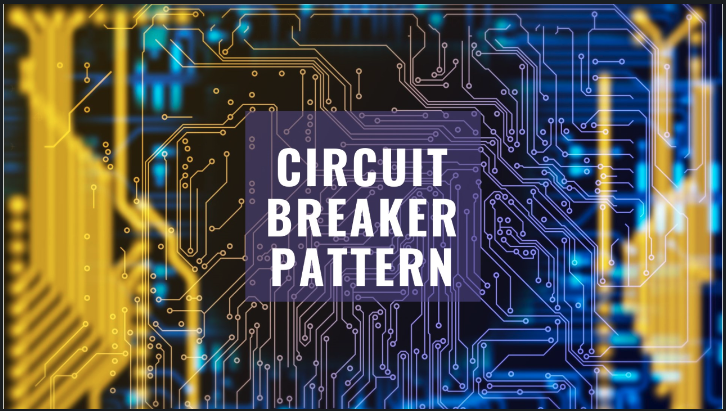In the fast-paced world of distributed systems, errors and dependency failures are inevitable. These glitches can cause cascading effects, bringing down entire applications. The circuit breaker pattern emerges as a robust technique to gracefully handle such situations and ensure application resilience. Let’s delve into this pattern, exploring its core principles and implementation with a code example.
- Error Recovery: When to Pull the Plug
Imagine your e-commerce application relies on a payment gateway to process orders. If the gateway malfunctions, users might encounter errors while trying to checkout. But what if the issue persists for an extended period? Continuous retries towards a failing service can overload it further, worsening the situation.
The circuit breaker pattern steps in here, acting as an intelligent switch that monitors the health of external services. Here’s the basic flow:
-
Closed State: This is the default state where the circuit breaker allows calls to proceed to the dependent service (payment gateway in our example).
-
Open State: If the error rate surpasses a predefined threshold within a specific time window, the circuit breaker trips, transitioning to the open state. In this state, subsequent requests are no longer forwarded to the faulty service. Instead, a fallback response is provided, like displaying a user-friendly message informing about the temporary unavailability.
-
Half-Open State: After a set timeout period (e.g., 10 seconds), the circuit breaker enters a half-open state. It cautiously allows a single request to pass through. If the request succeeds, the circuit breaker resets to the closed state, resuming normal operation. However, if the request fails again, the circuit breaker flips back to the open state, extending the timeout duration (to prevent continuous hammering).
This mechanism offers several advantages:
-
Protects Downstream Services: By isolating failing services, the circuit breaker prevents them from being bombarded with requests, allowing them time to recover.
-
Improves System Resilience: The fallback response ensures the application remains partially functional even during failures, delivering a more positive user experience.
-
Reduces Load: By stopping retries towards unavailable services, the circuit breaker minimizes unnecessary load on the application and network.
-
Dependency Failure: Code Example in Action
Let’s solidify our understanding with a simple Java code example simulating a circuit breaker:
public class PaymentService {
private CircuitBreaker circuitBreaker;
public PaymentService(CircuitBreaker circuitBreaker) {
this.circuitBreaker = circuitBreaker;
}
public boolean processPayment(Order order) {
if (circuitBreaker.isOpen()) {
// Inform user about payment gateway unavailability and provide fallback options (e.g., cash on delivery)
return false;
}
try {
return callPaymentGateway(order); // Simulates external API call
} catch (Exception e) {
circuitBreaker.recordFailure();
return false;
}
}
private boolean callPaymentGateway(Order order) {
// Simulates successful payment processing logic
return true;
}
}
public class CircuitBreaker {
private boolean isOpen;
private long lastFailureTime;
private final int failureThreshold;
private final long resetTimeout;
public CircuitBreaker(int failureThreshold, long resetTimeout) {
this.failureThreshold = failureThreshold;
this.resetTimeout = resetTimeout;
this.isOpen = false;
}
public synchronized boolean isOpen() {
return isOpen;
}
public synchronized void recordFailure() {
if (!isOpen) {
isOpen = true;
lastFailureTime = System.currentTimeMillis();
}
}
public synchronized boolean isReadyToTry() {
return !isOpen || (System.currentTimeMillis() - lastFailureTime) > resetTimeout;
}
}
This code defines a function GetSubStringAfterWord that takes two arguments:
- text: The input string from which the substring needs to be extracted.
- word: The word after which the substring extraction should begin.
The function first uses IndexOf to find the starting index of the word within the text. If the word is not found, IndexOf returns -1. The code checks for this condition and returns null if not found.
Otherwise, it uses Substring to extract the substring starting from the character after the end of the word (which is startIndex + word.Length) and going till the end of the string.
The example usage demonstrates how to call the function and handle the case where the word is not found in the text. 💡



